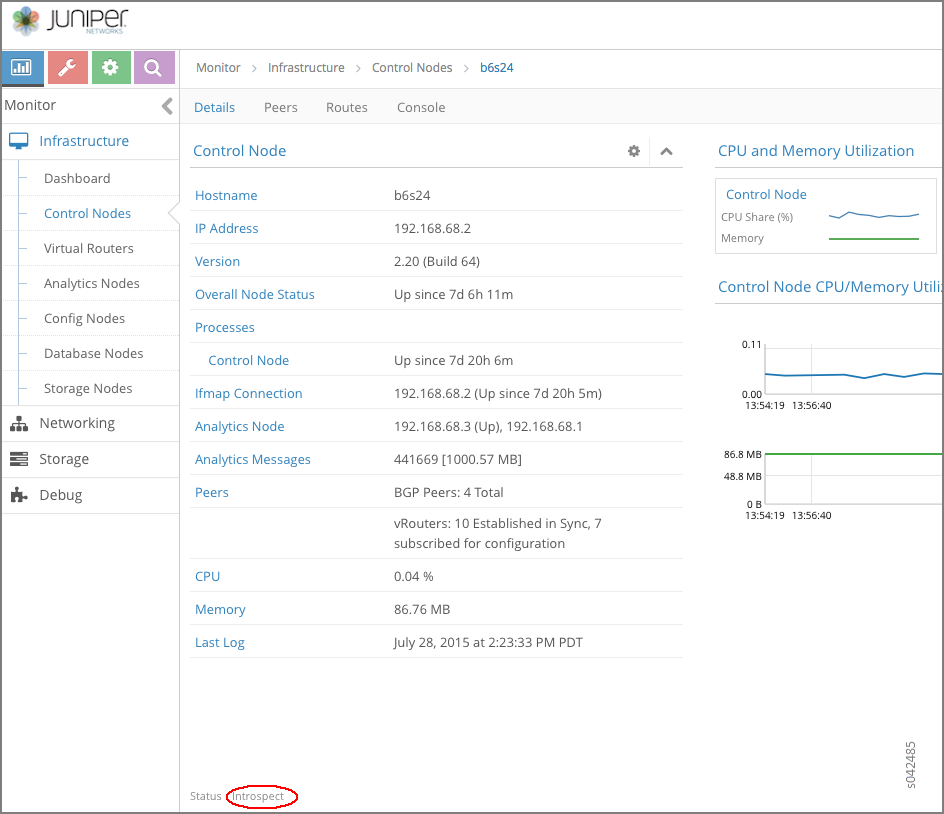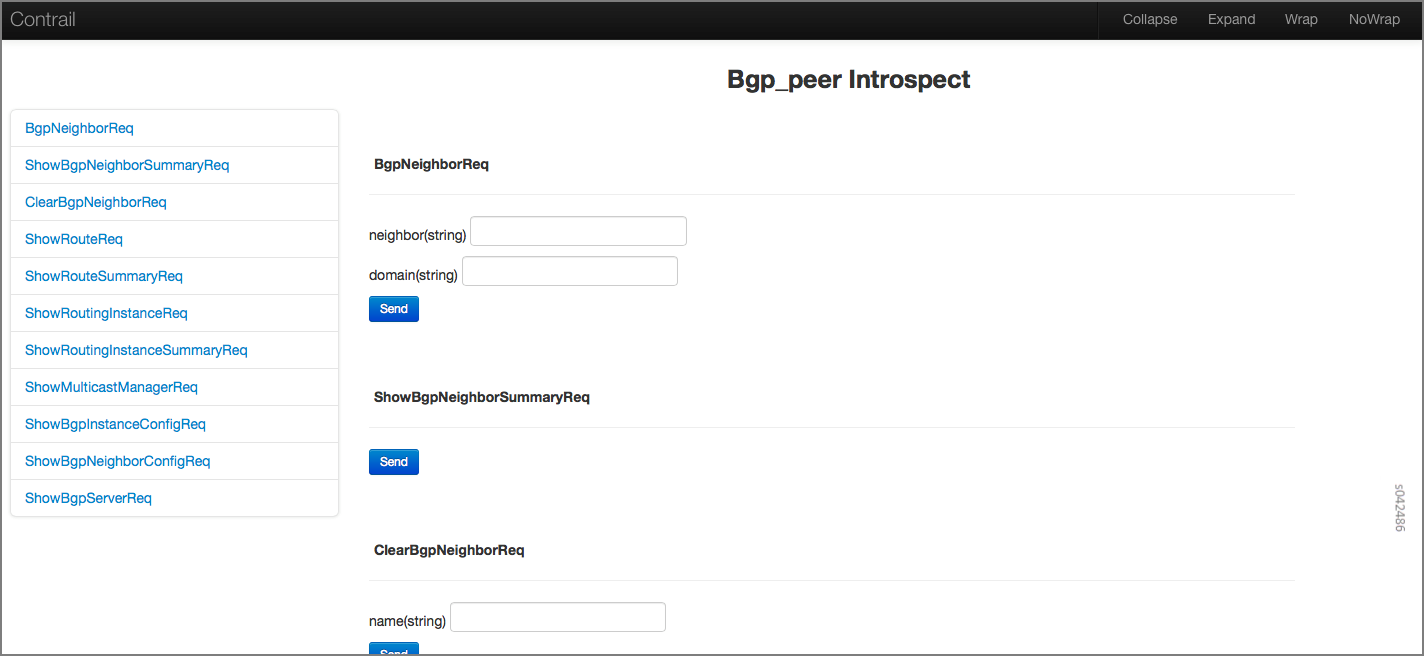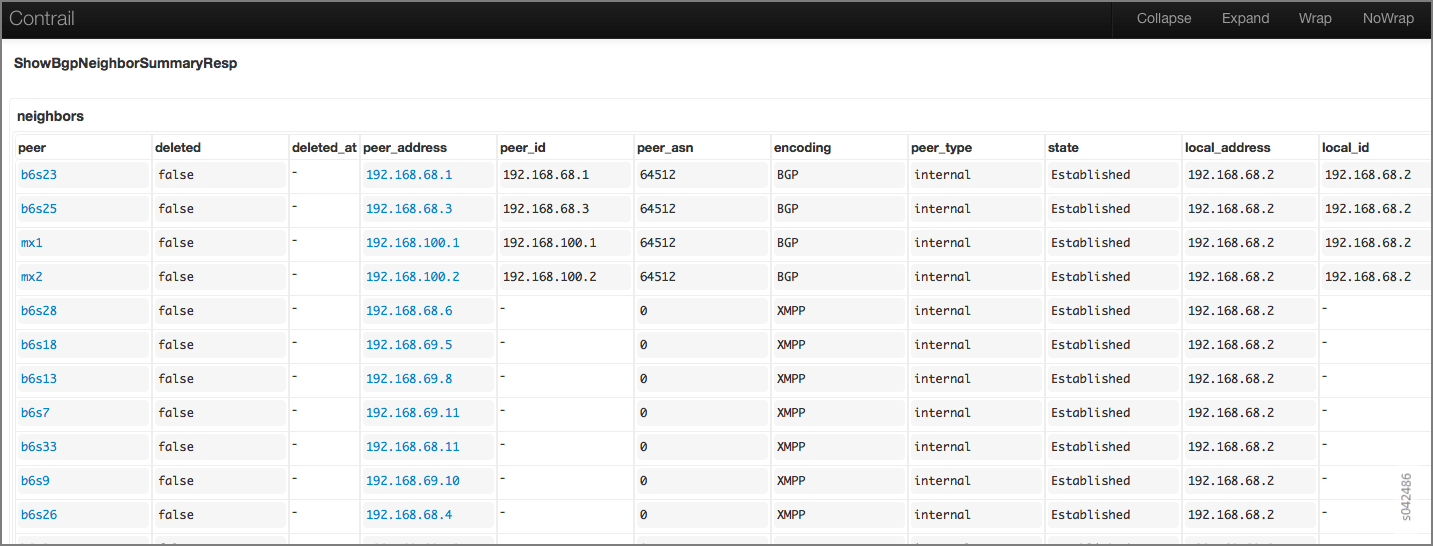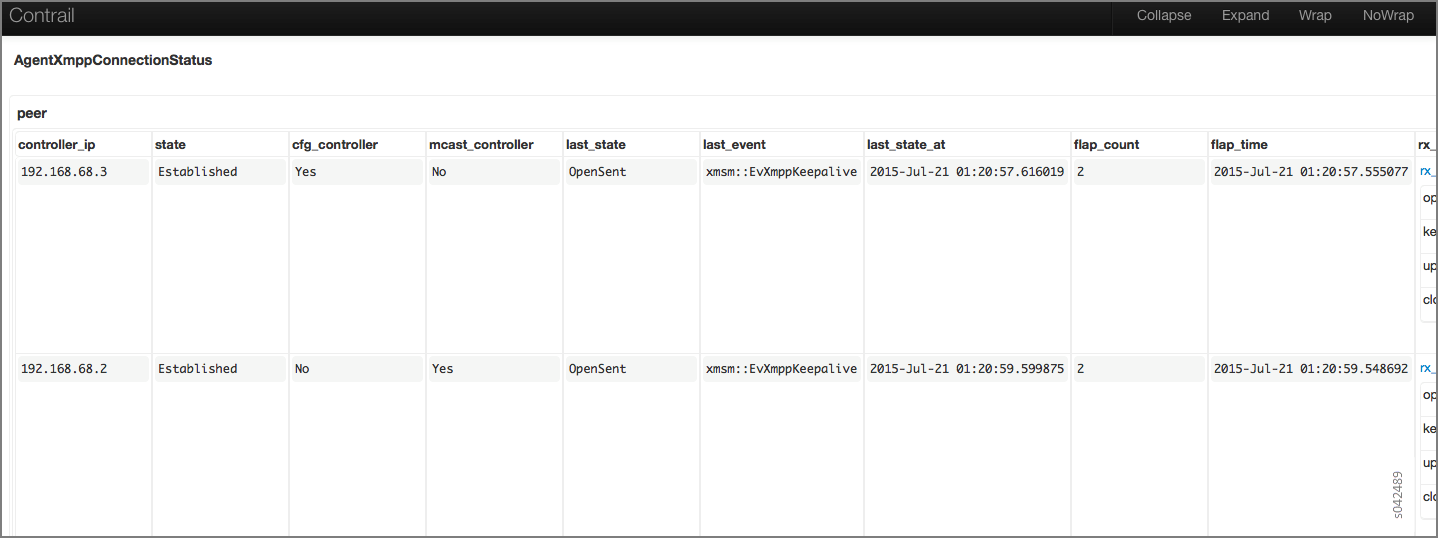- play_arrow Overview
- play_arrow Understanding Contrail
-
- play_arrow Installing and Upgrading Contrail
- play_arrow Server Requirements and Supported Platforms
- play_arrow Installing Contrail and Provisioning Roles
- Introduction to Containerized Contrail Modules
- Introduction to Contrail Microservices Architecture
- Downloading Installation Software
- Overview of contrail-ansible-deployer used in Contrail Command for Installing Contrail with Microservices Architecture
- Installing Contrail with OpenStack and Kolla Ansible
- Configuring the Control Node with BGP
- Contrail Global Controller
- Role and Resource-Based Access Control
- play_arrow Installation and Configuration Scenarios
- play_arrow Upgrading Contrail Software
- play_arrow Backup and Restore Contrail Software
- play_arrow Contrail Command
- play_arrow Multicloud Contrail
- play_arrow Using Contrail with Red Hat
- play_arrow Using Contrail with Juju Charms
-
- play_arrow Configuring Contrail
- play_arrow Configuring Virtual Networks
- Creating Projects in OpenStack for Configuring Tenants in Contrail
- Creating a Virtual Network with Juniper Networks Contrail
- Creating a Virtual Network with OpenStack Contrail
- Creating an Image for a Project in OpenStack Contrail
- Creating a Floating IP Address Pool
- Using Security Groups with Virtual Machines (Instances)
- Support for IPv6 Networks in Contrail
- Configuring EVPN and VXLAN
- play_arrow Example of Deploying a Multi-Tier Web Application Using Contrail
- play_arrow Configuring Services
- play_arrow Configuring Service Chaining
- play_arrow Examples: Configuring Service Chaining
-
Debugging Processes Using the Contrail Introspect Feature
This topic describes how to use the Sandesh infrastructure and the Contrail Introspect feature to debug processes.
Introspect is a mechanism for taking a program object and querying information about it.
Sandesh is the name of a unified infrastructure in the Contrail Virtual Networking solution.
Sandesh is a way for the Contrail daemons to provide a request-response mechanism. Requests and responses are defined in Sandesh format and the Sandesh compiler generates code to process the requests and send responses.
Sandesh also provides a way to use a Web browser to send Sandesh requests to a Contrail daemon and get the Sandesh responses. This feature is used to debug processes by looking into the operational status of the daemons.
Each Contrail daemon starts an HTTP server, with the following page types:
The main index.html listing all Sandesh modules and the links to them.
Sandesh module pages that present HTML forms for each Sandesh request.
XML-based dynamically-generated pages that display Sandesh responses.
An automatically generated page that shows all code needed for rendering and all HTTP server-client interactions.
You can display the HTTP introspect of a Contrail daemon directly by accessing the following Introspect ports:
<controller-ip>:8083. This port displays the contrail-control introspect port.
<compute-ip>:8085 This port displays the contrail-vrouter-agent introspect port.
Another way to launch the Introspect page is by browsing to a particular node page using the Contrail Web user interface.
Figure 1 shows the contrail-control infrastructure page. Notice the Introspect link at the bottom of the Control Nodes Details tab window.

The following are the Sandesh modules for the Contrail control process (contrail-control) Introspect port.
bgp_peer.xml
control_node.xml
cpuinfo.xml
discovery_client_stats.xml
ifmap_log.xml
ifmap_server_show.xml
rtarget_group.xml
sandesh_trace.xml
sandesh_uve.xml
service_chaining.xml
static_route.xml
task.xml
xmpp_server.xml
Figure 2 shows the Controller Introspect window.

Figure 3 shows an example of the BGP Peer (bgp_peer.xml) Introspect page.

Figure 4 shows an example of the BGP Neighbor Summary Introspect page.

The following are the Sandesh modules for the Contrail vRouter agent (contrail-vrouter-agent) Introspect port.
agent.xml
agent_stats_interval.xml
cfg.xml
controller.xml
cpuinfo.xml
diag.xml
discovery_client_stats.xml
flow_stats_interval.xml
ifmap_agent.xml
kstate.xml
multicast.xml
pkt.xml
port_ipc.xml
sandesh_trace.xml
sandesh_uve.xml
services.xml
stats_interval.xml
task.xml
xmpp_server.xml
Figure 5 shows an example of the Agent (agent.xml) Introspect page.






















